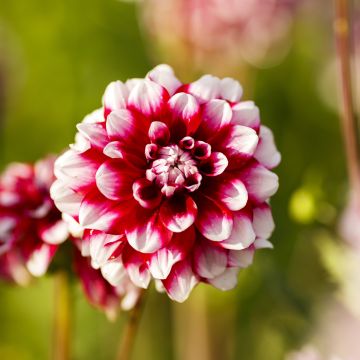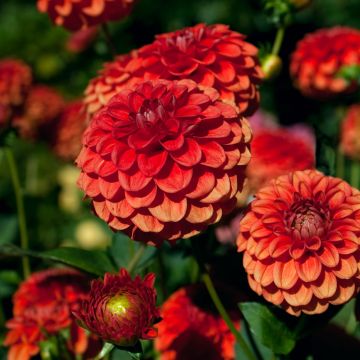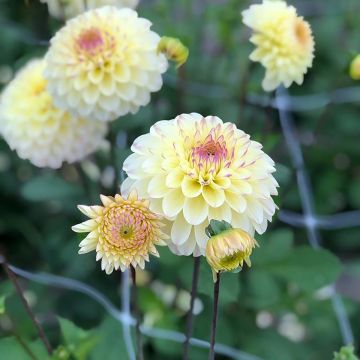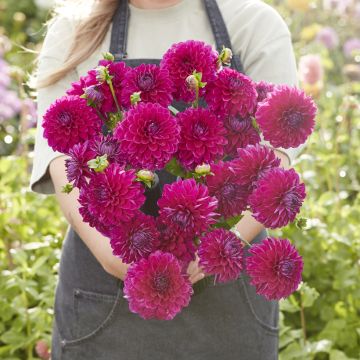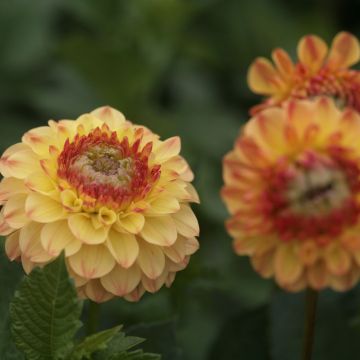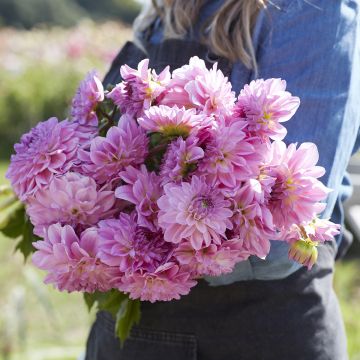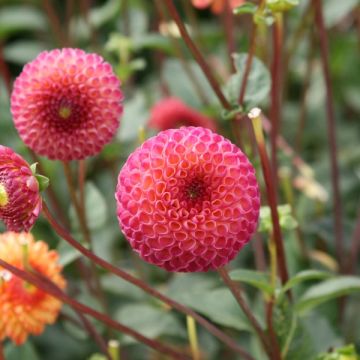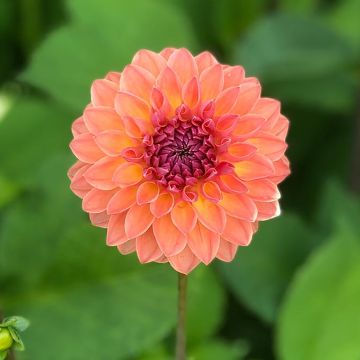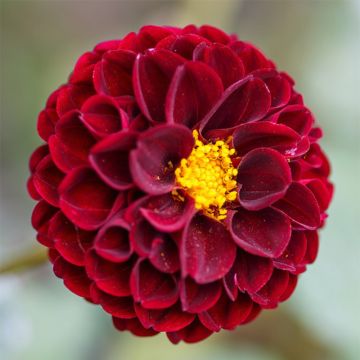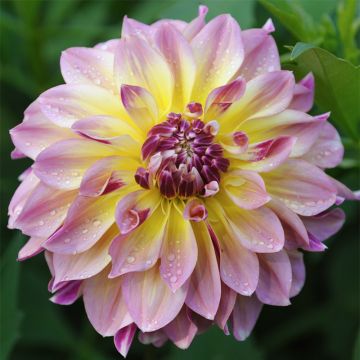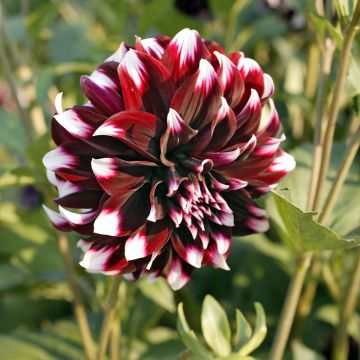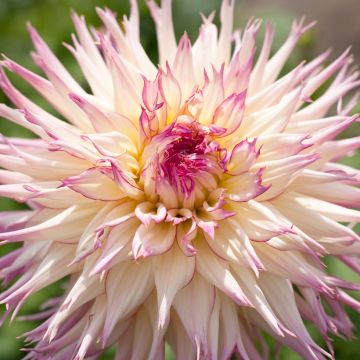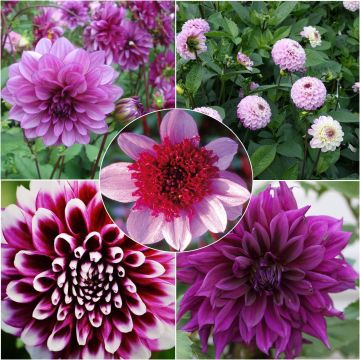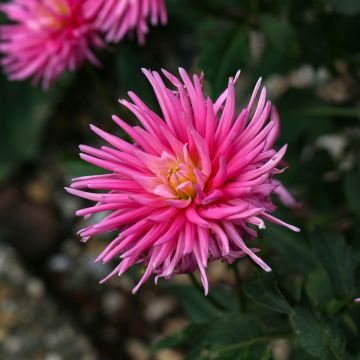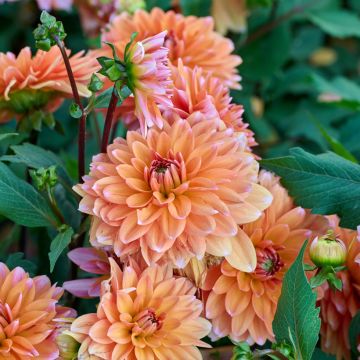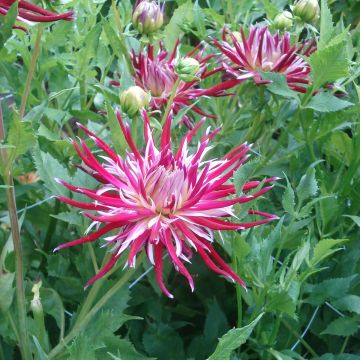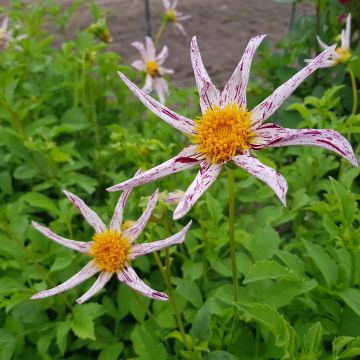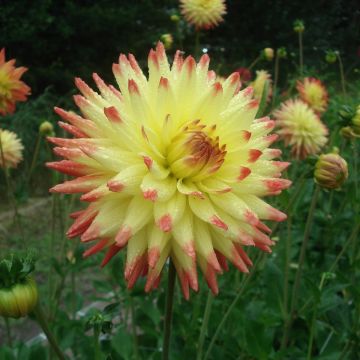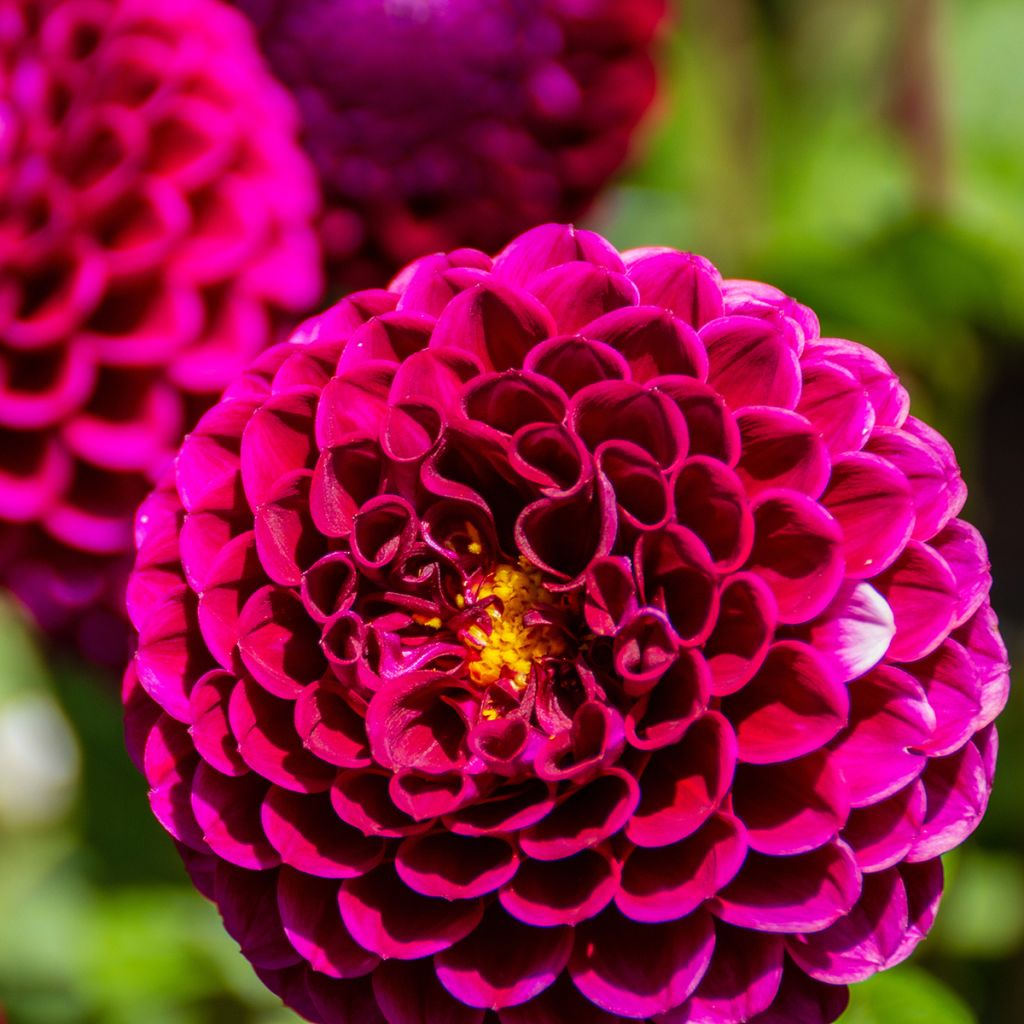

Dahlia Ivanetti
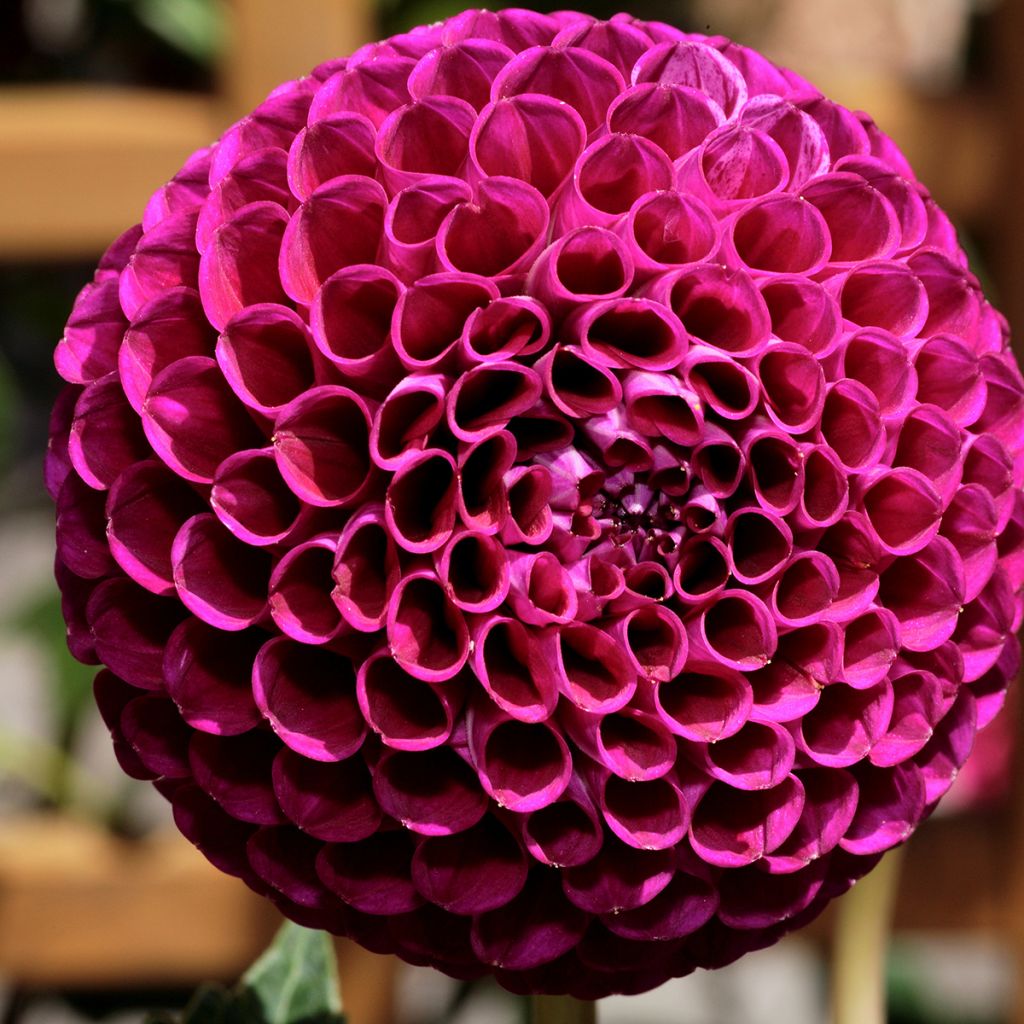

Dahlia Ivanetti
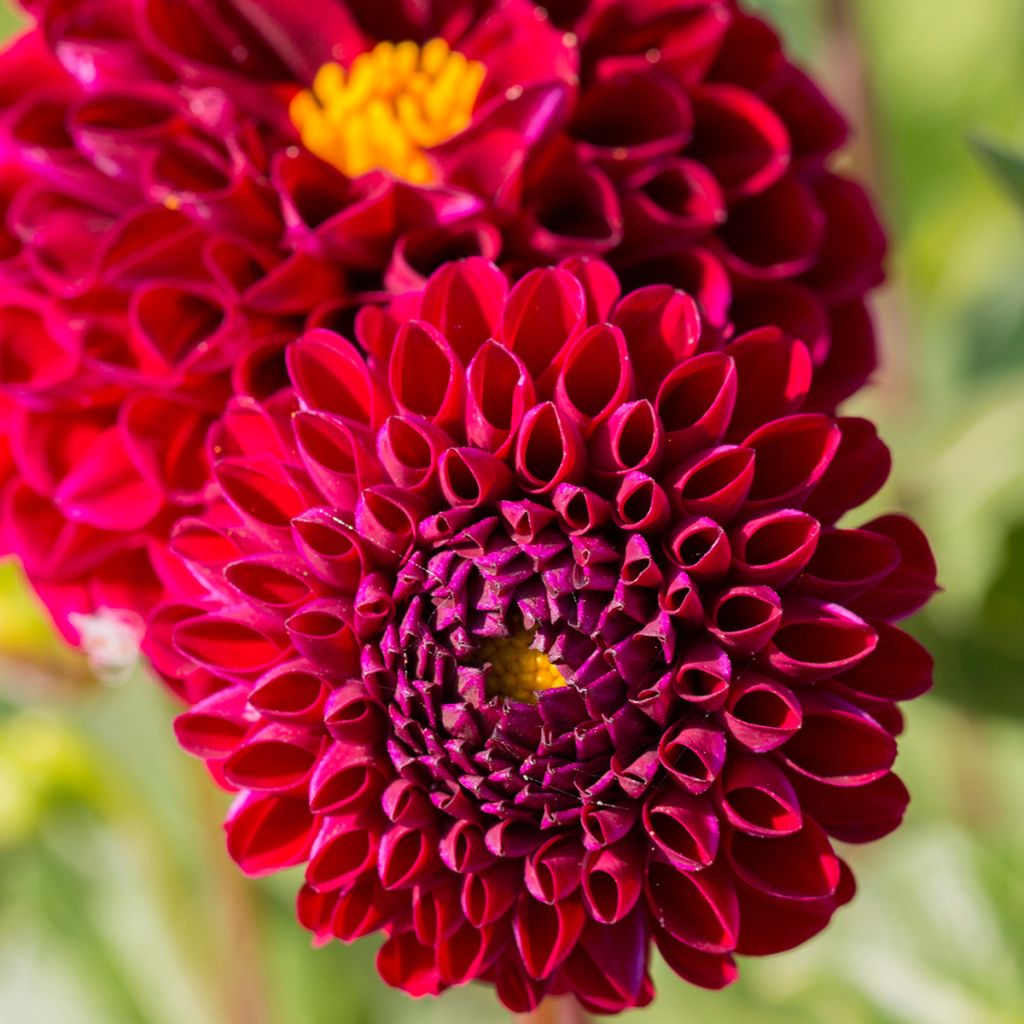

Dahlia Ivanetti
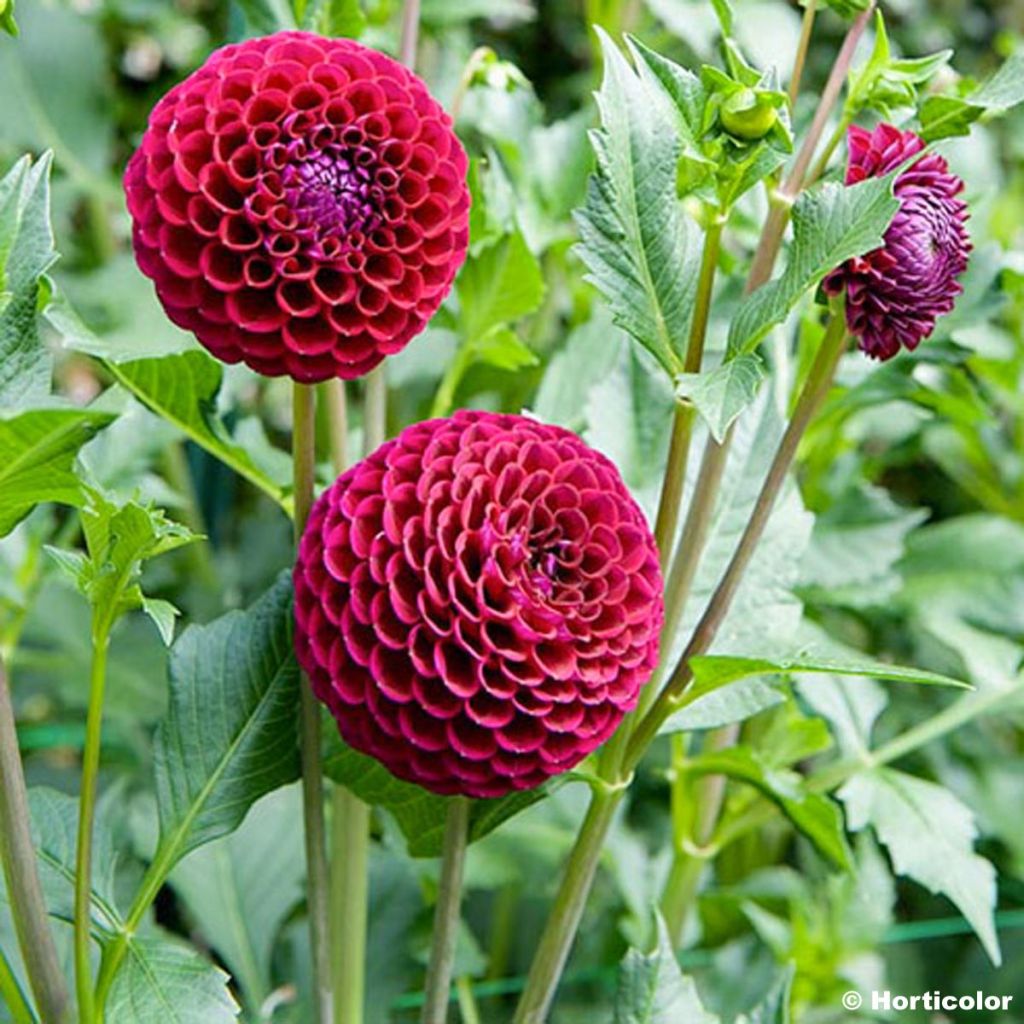

Dahlia Ivanetti
Dahlia Ivanetti
Dahlia Ivanetti
Dahlia
He arrived yesterday, with his friends from the same order. Plump as can be, with that obesity characteristic of healthy dahlia strains. This sport of Cornel surely has the qualities of its father, abundant flowers, tons of potatoes, and formal perfection when it comes to flowers. I can't wait to see it in the garden, swaying its pompons in the August sun. Patience! It's still sleeping.
Philippe, 03/02/2019
This item cannot be shipped to the selected country
Delivery charge from €5.90
More information
Schedule delivery date,
and select date in basket
This plant carries a 6 months recovery warranty
More information
We guarantee the quality of our plants for a full growing cycle, and will replace at our expense any plant that fails to recover under normal climatic and planting conditions.
From €5.90 for pickup delivery and €6.90 for home delivery
Express home delivery from €8.90.

Does this plant fit my garden?
Set up your Plantfit profile →
Description
The Dahlia Ivanetti is a true performer in the garden as well as in bouquets. Its flowers in the shape of small alveolar pompoms are astonishing with their beautiful dark red colour, richly nuanced with purple-violet, a fantastic shade that does not fade in the sun. They succeed each other relentlessly, from summer to autumn, and are carried by strong and sturdy stems, particularly interesting for making bouquets. The plant, of medium size, has a bushy habit that is also suitable for ornamental perennial or bush borders.
Dahlias belong to the asteraceae family and are originally from the high plateaus of Mexico. Currently, the few 25,000 horticultural varieties obtained by humans have invaded, to our greatest pleasure, gardens worldwide.
The 'Ivanetti' variety, obtained in 1999, will measure approximately 1m (3ft) in height and 60cm (24in) in diameter after 3 to 4 months of cultivation. It is classified as a pompom dahlia (or ball dahlia); it is a horticultural category defined by the shape of the flower. In this group, the heads are very compact, of modest size, but produced abundantly, and the tubular ligules form a perfectly spherical inflorescence that has an alveolar structure, like a beehive. The 'Ivanetti' flowers are 5 to 7 cm (2 to 3in) in diameter. The ligules are a very dark, nuanced, and velvety red. The golden heart of the flower only appears late, just before fading. The flowering takes place from July to October-November. The habit is bushy and upright. The very branched, long, and sturdy stems are hollow and the leaves are opposite, pinnatisect, meaning that they are divided into 3 or 5 very toothed lobes. The leaves and stems are a medium green.
To encourage repeat flowering, take care to remove faded flowers, or even better, regularly make large colorful bouquets by combining it with other varieties. 'Ivanetti' produces magnificent flowers in bouquets, accompanied by single or pompon varieties, white, pink, or mauve. This variety blends particularly well with the blue flowers of perennial delphiniums, monkshoods, and asters, and stands out beautifully against the green or purple foliage of fennel. In borders, this dahlia will create warm and bright spots alongside Echinaceas, for example, which flower at the same time, as well as daylilies. This variety with its long and heavily blooming stems allows for bouquet arrangements until late in the season.
The star plant of borders and herb gardens, dahlias confidently accompany the most beautiful flowers but are also appreciated alongside vegetable plants. In Mexico, this tuberous plant was first cultivated as a root vegetable for consumption. However, its poor taste qualities relegated it to the rank of ornamental plant. Since then, the interest in their beautiful exuberance has never waned.
Report an error about the product description
Dahlia Ivanetti in pictures
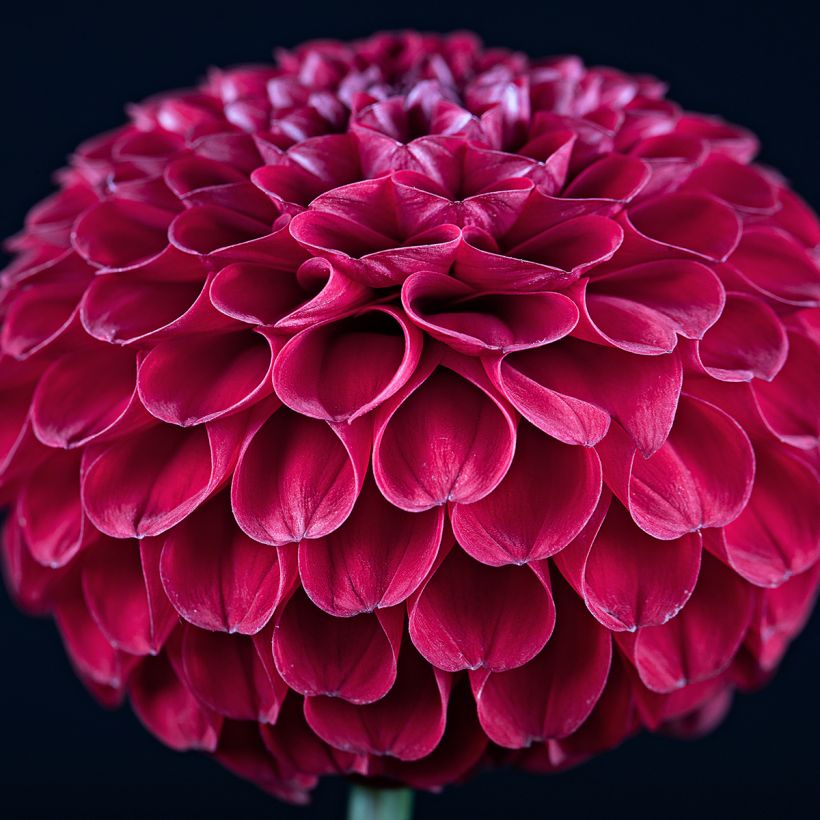

Plant habit
Flowering
Foliage
Botanical data
Dahlia
Ivanetti
Asteraceae
Dahlia
Cultivar or hybrid
Other Pom-pom Dahlias
Planting and care
Planting period
Intended location
Care
-
, onOrder confirmed
Reply from on Promesse de fleurs
Dahlias
Haven't found what you were looking for?
Hardiness is the lowest winter temperature a plant can endure without suffering serious damage or even dying. However, hardiness is affected by location (a sheltered area, such as a patio), protection (winter cover) and soil type (hardiness is improved by well-drained soil).

Photo Sharing Terms & Conditions
In order to encourage gardeners to interact and share their experiences, Promesse de fleurs offers various media enabling content to be uploaded onto its Site - in particular via the ‘Photo sharing’ module.
The User agrees to refrain from:
- Posting any content that is illegal, prejudicial, insulting, racist, inciteful to hatred, revisionist, contrary to public decency, that infringes on privacy or on the privacy rights of third parties, in particular the publicity rights of persons and goods, intellectual property rights, or the right to privacy.
- Submitting content on behalf of a third party;
- Impersonate the identity of a third party and/or publish any personal information about a third party;
In general, the User undertakes to refrain from any unethical behaviour.
All Content (in particular text, comments, files, images, photos, videos, creative works, etc.), which may be subject to property or intellectual property rights, image or other private rights, shall remain the property of the User, subject to the limited rights granted by the terms of the licence granted by Promesse de fleurs as stated below. Users are at liberty to publish or not to publish such Content on the Site, notably via the ‘Photo Sharing’ facility, and accept that this Content shall be made public and freely accessible, notably on the Internet.
Users further acknowledge, undertake to have ,and guarantee that they hold all necessary rights and permissions to publish such material on the Site, in particular with regard to the legislation in force pertaining to any privacy, property, intellectual property, image, or contractual rights, or rights of any other nature. By publishing such Content on the Site, Users acknowledge accepting full liability as publishers of the Content within the meaning of the law, and grant Promesse de fleurs, free of charge, an inclusive, worldwide licence for the said Content for the entire duration of its publication, including all reproduction, representation, up/downloading, displaying, performing, transmission, and storage rights.
Users also grant permission for their name to be linked to the Content and accept that this link may not always be made available.
By engaging in posting material, Users consent to their Content becoming automatically accessible on the Internet, in particular on other sites and/or blogs and/or web pages of the Promesse de fleurs site, including in particular social pages and the Promesse de fleurs catalogue.
Users may secure the removal of entrusted content free of charge by issuing a simple request via our contact form.
The flowering period indicated on our website applies to countries and regions located in USDA zone 8 (France, the United Kingdom, Ireland, the Netherlands, etc.)
It will vary according to where you live:
- In zones 9 to 10 (Italy, Spain, Greece, etc.), flowering will occur about 2 to 4 weeks earlier.
- In zones 6 to 7 (Germany, Poland, Slovenia, and lower mountainous regions), flowering will be delayed by 2 to 3 weeks.
- In zone 5 (Central Europe, Scandinavia), blooming will be delayed by 3 to 5 weeks.
In temperate climates, pruning of spring-flowering shrubs (forsythia, spireas, etc.) should be done just after flowering.
Pruning of summer-flowering shrubs (Indian Lilac, Perovskia, etc.) can be done in winter or spring.
In cold regions as well as with frost-sensitive plants, avoid pruning too early when severe frosts may still occur.
The planting period indicated on our website applies to countries and regions located in USDA zone 8 (France, United Kingdom, Ireland, Netherlands).
It will vary according to where you live:
- In Mediterranean zones (Marseille, Madrid, Milan, etc.), autumn and winter are the best planting periods.
- In continental zones (Strasbourg, Munich, Vienna, etc.), delay planting by 2 to 3 weeks in spring and bring it forward by 2 to 4 weeks in autumn.
- In mountainous regions (the Alps, Pyrenees, Carpathians, etc.), it is best to plant in late spring (May-June) or late summer (August-September).
The harvesting period indicated on our website applies to countries and regions in USDA zone 8 (France, England, Ireland, the Netherlands).
In colder areas (Scandinavia, Poland, Austria...) fruit and vegetable harvests are likely to be delayed by 3-4 weeks.
In warmer areas (Italy, Spain, Greece, etc.), harvesting will probably take place earlier, depending on weather conditions.
The sowing periods indicated on our website apply to countries and regions within USDA Zone 8 (France, UK, Ireland, Netherlands).
In colder areas (Scandinavia, Poland, Austria...), delay any outdoor sowing by 3-4 weeks, or sow under glass.
In warmer climes (Italy, Spain, Greece, etc.), bring outdoor sowing forward by a few weeks.


































